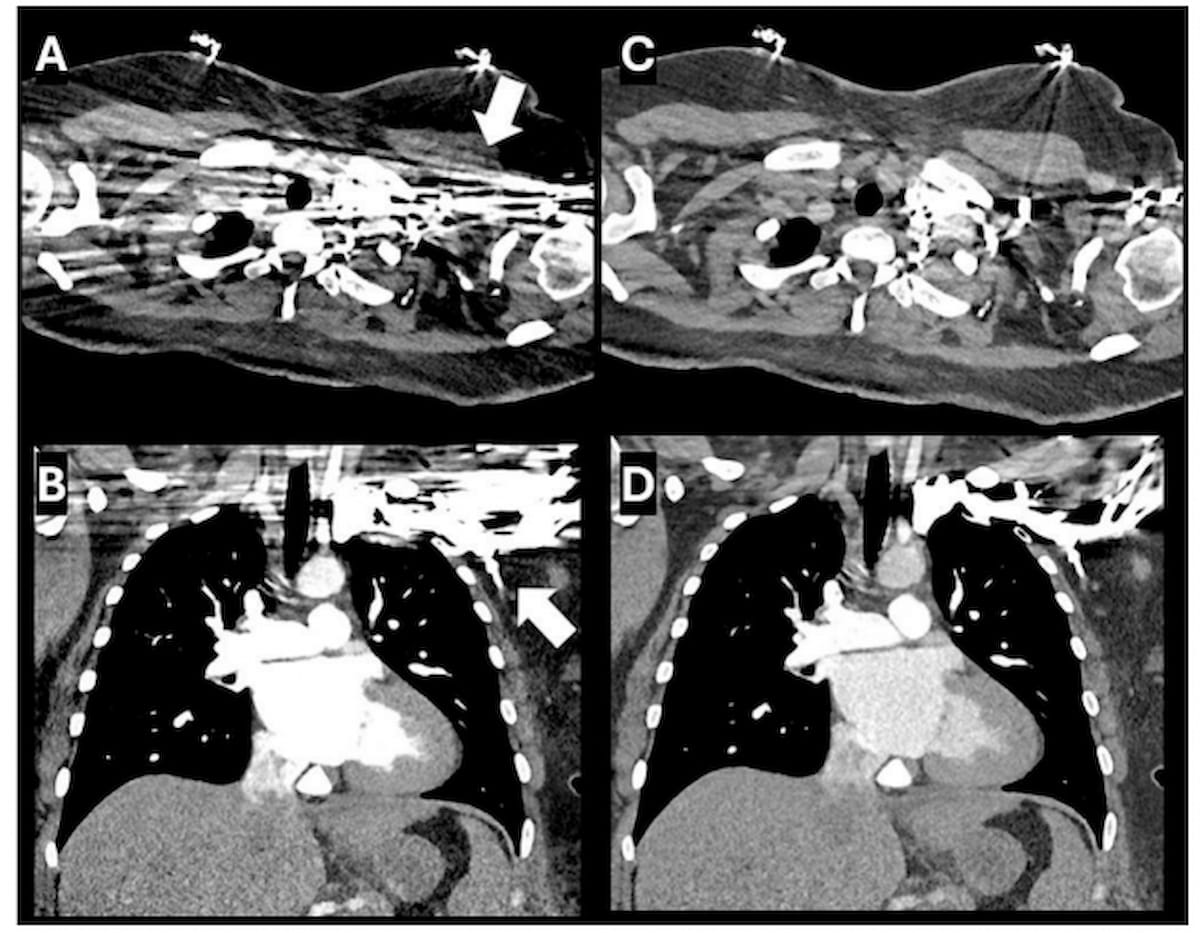Polyenergetic reconstruction can have a significant impact in addressing streak artifacts associated with photon counting computed tomography (PCCT), according to findings from a new study.
For the study, recently published in Clinical Imaging, research compared monoenergetic and polyenergetic reconstruction techniques in a cohort of 50 patients (median age of 65) who had chest computed tomography angiography (CTA) with photon-counting detector CT. (PCD-CT)
For quantitative evaluation involving tracheal air density, the researchers found that polyenergetic reconstruction had median attenuation of -930 HU vs. -1010 HU with monoenergetic reconstruction.
“This reduction in attenuation values is indicative of the (polyenergetic reconstruction technique’s) ability to represent the true density of scanned tissues more accurately, thereby diminishing the impact of artifacts on the final image. Such improvements are critical in clinical settings, where the accuracy of density measurements can directly influence diagnostic decisions and patient management strategies,” wrote study co-author Ismail M. Kabakus, M.D., Ph.D., who is affiliated with the Division of Cardiovascular Imaging in the Department of Radiology at the Medical University of South Carolina in Charleston, S.C., and colleagues.
In the qualitative assessment, the study authors noted that polyenergetic reconstruction offered significantly lower median variation (38.8 HU) in comparison to monoenergetic reconstruction (65.2 HU).
Utilizing a Likert five-point scale, the researchers said a 2.5 median image quality assessment for monoenergetic reconstructed images reflected moderate to severe artifacts affecting visualization of anatomical areas ranging from the vertebral artery to the thyroid glands. However, the 4.0 median image quality evaluation for the use of polyenergetic reconstruction indicated minimal artifact obstruction, according to the study authors.
“The correlation between decreased artifact attenuation and improved image quality further supports the utility of polyenergetic reconstruction in mitigating the effects of streak artifacts on diagnostic imaging for this current generation of image reconstruction algorithms,” added Kabakus and colleagues.
Three Key Takeaways
• Lower median attenuation of tracheal air density with polyenergetic reconstruction. Researchers noted a median attenuation of -930 HU iwith polyenergetic reconstruction vs. -1010 HU with monoenergetic reconstruction.
• Enhanced image quality. The study demonstrated that polyenergetic reconstruction provides superior image quality compared to monoenergetic reconstruction, with a median image quality rating of 4.0 versus 2.5, indicating minimal artifact obstruction.
• Reduction in variation. Polyenergetic reconstruction shows a significant reduction in median variation (38.8 HU) in comparison to monoenergetic reconstruction (65.2 HU).
(Editor’s note: For related content, see “FDA Clears Enhanced Mobile CT System with High-Resolution Photon-Counting Technology,” “Current Concepts with Advances in Photon-Counting Computed Tomography” and “Could Virtual Non-Contrast Images from Photon-Counting CT Reduce Radiation Dosing with CCTA?”)
Overall, the study authors said the findings provide “compelling evidence” for the role of polyenergetic reconstruction in mitigatting a key challenge with dual-source PCD-CT.
“The introduction of polyenergetic reconstruction addresses the degradation of image quality due to streak artifacts, especially in challenging imaging scenarios such as high contrast areas,” noted Kabakus and colleagues. “This study’s results not only highlight the potential of polyenergetic reconstruction in enhancing diagnostic reliability but also mark a significant step towards overcoming the limitations of current version PCD-CT imaging techniques when dual source mode is used.”
Beyond the inherent limitations of a single-center retrospective study, the authors acknowledged that their findings may not be applicable in other clinical scenarios due to their focus on chest CT. The researchers suggested that future research explore the use of polyenergetic reconstruction in a variety of CT imaging areas and the corresponding impact on outcomes.
